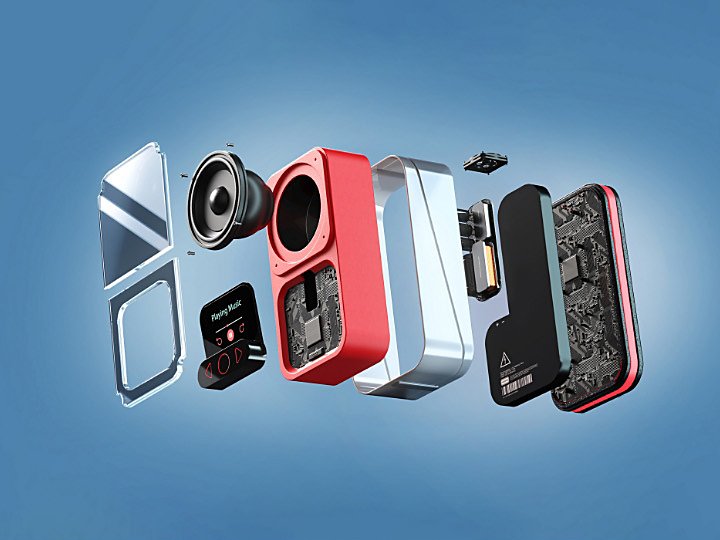Adobe Substance 3D
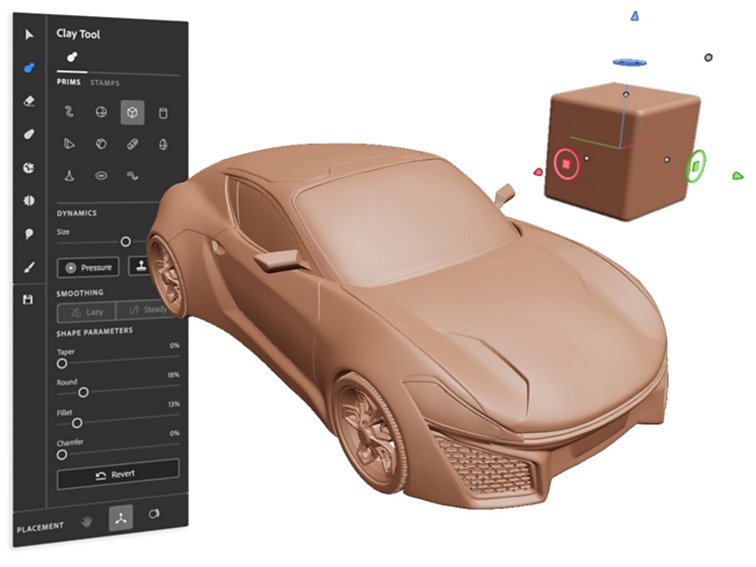
Create 3D models on desktop and in VR.
Create 3D models using digital clay with hands-on tools that make modelling feel as gestural and natural as real-world sculpting.
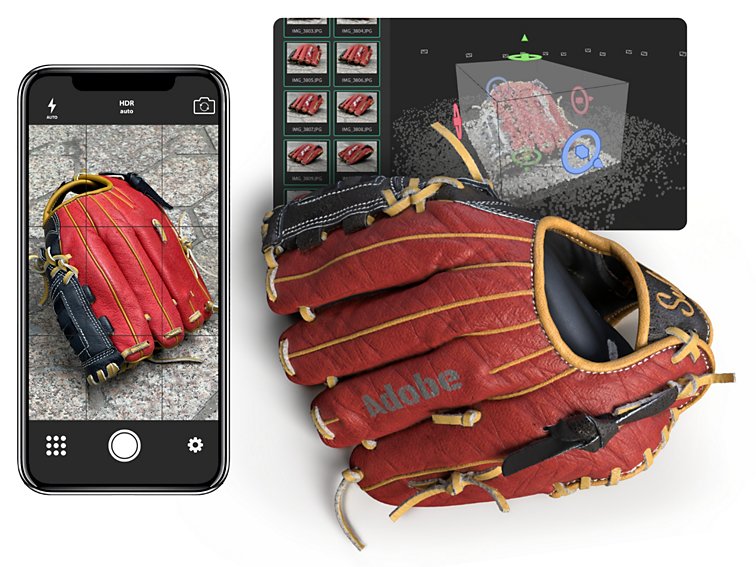
Capture the real world in 3D.
Turn real-life pictures into 3D models, materials or lights, then mix and blend assets to create even more advanced surfaces.
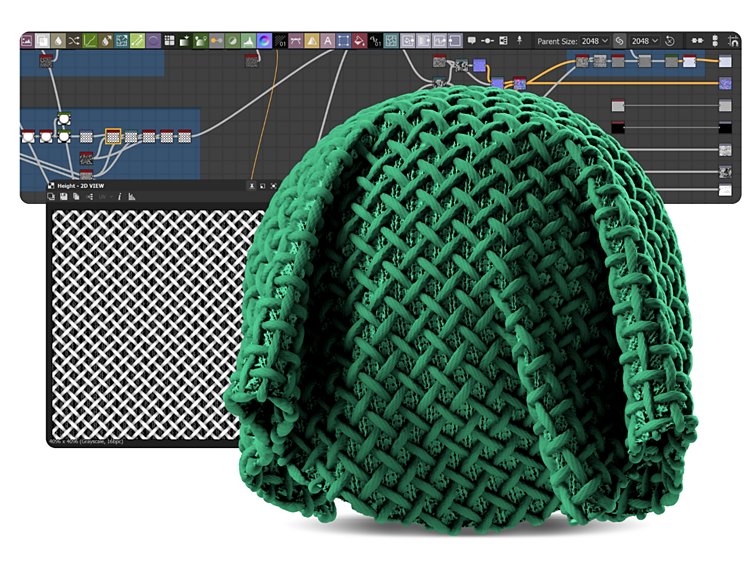
Create 3D materials with infinite variations.
Author seamless materials, patterns, image filters and lights with an Academy Award-winning app and node-based workflow.
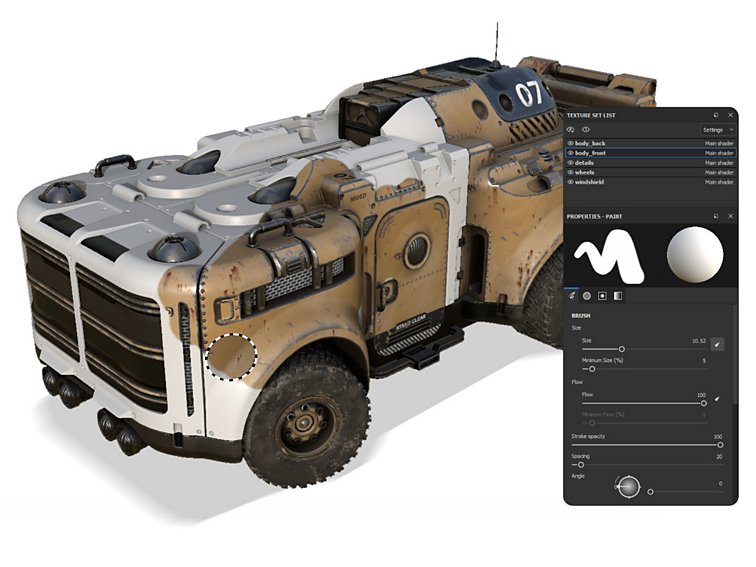
Texture in 3D with the go-to standard: Painter.
Turn any asset into a digital canvas. Paint detailed effects directly onto it's surface with parametric brushes and smart materials.
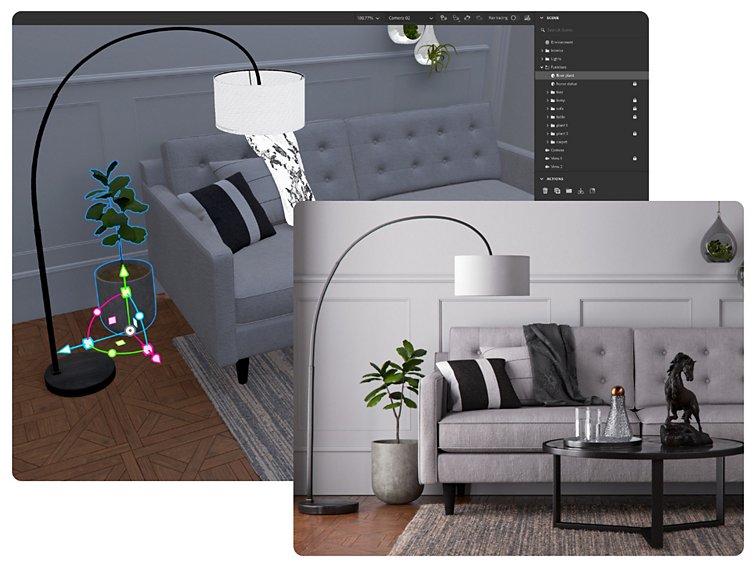
Stage 3D scenes in your own virtual studio.
Assemble and render photorealistic scenes. Use premade templates built by world-class photographers for stunning results in minutes.
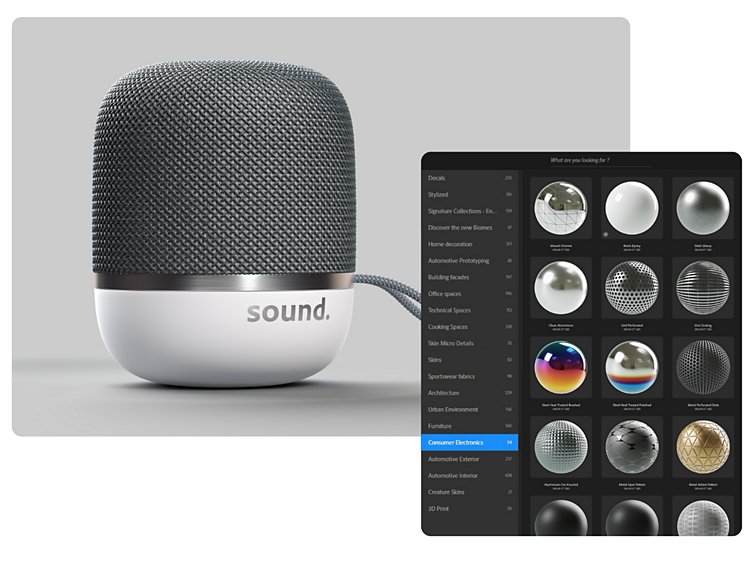
Explore thousands of high-end 3D assets.
Access thousands of 3D assets created by world-class artists for a variety of industries, including models, materials and lights.
Frequently asked questions.
Yes, you can download any Substance 3D app and try it for 30 days for free.
More powerful hardware and graphics processors improve your experience with the Substance 3D apps. Learn more about the recommended hardware for the best 3D experience.
The Substance 3D texturing plan includes Painter, Designer and Sampler apps and up to 30 3D materials a month. The Substance 3D collection plan includes Modeller, Painter, Designer, Sampler and Stager apps and up to 50 3D assets a month.
Yes, your Substance 3D plan includes high-quality 3D assets, available to download every month. All of the Substance 3D assets are royalty-free and usable across all your commercial and creative projects.
No, Substance 3D apps are sold exclusively in the Substance 3D plans. Learn more about what’s included in Creative Cloud All Apps plans.
Stager is a new 3D app to compose and render 3D scenes that offers a variety of new features.
Yes, we offer the Substance 3D Collection for enterprise customers. Learn more about Adobe Substance 3D for enterprise.
Substance 3D is included at no cost in Creative Cloud plans for Higher Education colleges and universities. Assets are not included in the Higher Education plan. K12 institutions are not included in this offer at present. Substance 3D texturing apps are available for free for students and teachers here (non-commercial use, learning purposes only).
After you subscribe, the Substance 3D apps will be available in your Creative Cloud desktop application to download and install.
Find the plan that’s right for you.
Substance 3D Collection
for Individuals
incl. GST
Model, texture, and render 3D assets and scenes. Download 50 3D assets per month. Learn more
Substance 3D Collection
for Teams
per license excl. GST
Model, texture, and render 3D assets and scenes. Download 100 3D assets per month. Learn more
Substance 3D Collection
for Students and Teachers
FREE
Model, texture, and render 3D assets and scenes. Learn more
Purchase by phone: 1800 723 1389
Are you a business? Request a consultation
Higher Education Schools and Universities: Substance 3D apps are now included with our education plans
ADOBE AERO
Augmented Reality. It’s Everything You Imagined.
Adobe Aero, the most intuitive way to build, view and share robust immersive storytelling experiences in mobile AR. Available on iOS and as a public beta for desktop on macOS and Windows.
Deliver designs that pop with Substance 3D and Illustrator.
